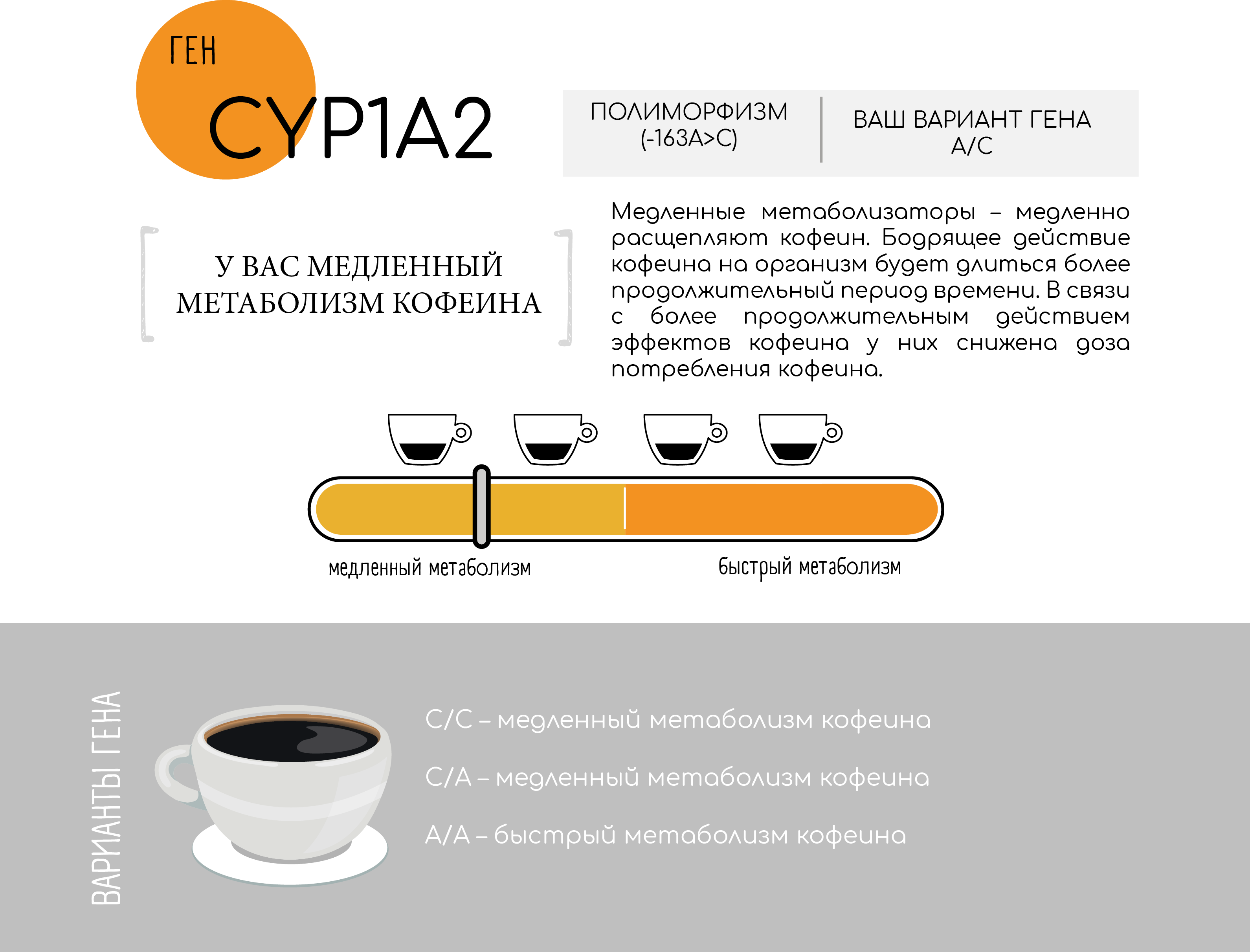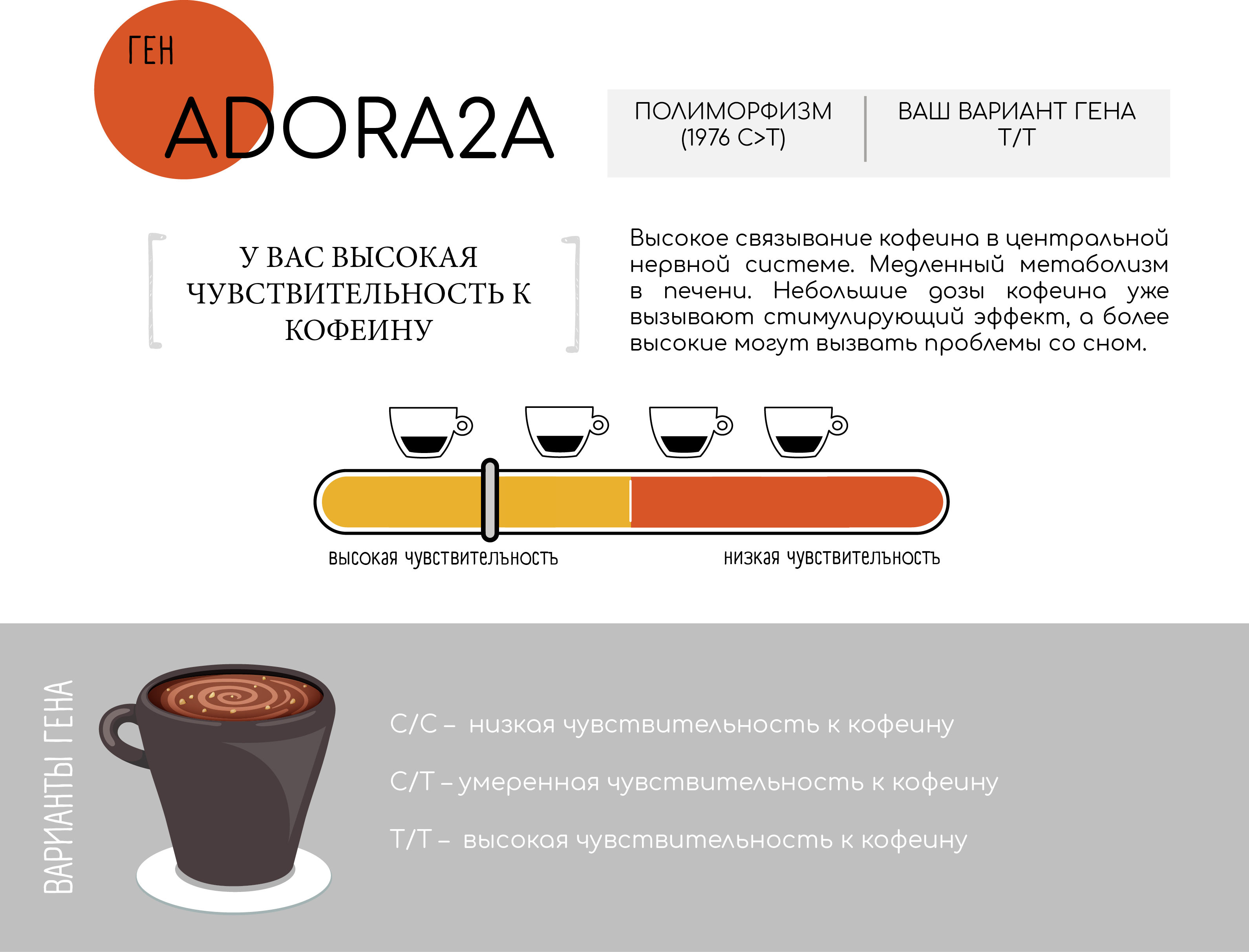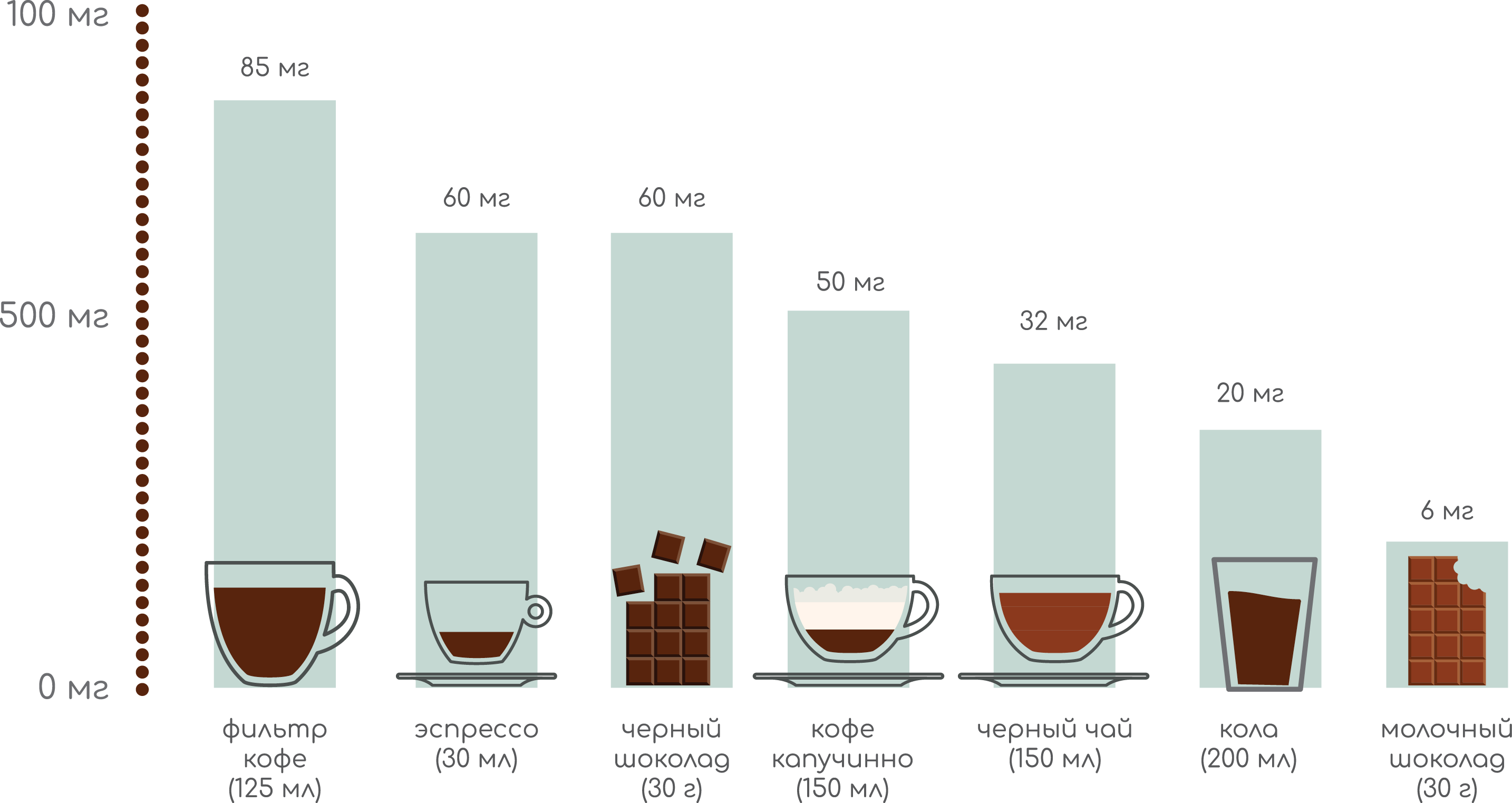analysis of the CYP1A2 and ADORA 2A genes, which
are responsible for metabolism and caffeine sensitivity


BASED ON THE RESULTS OF THE GENETIC TEST, A PERSONAL BOOK WITH TRANSCRIPTS AND RECOMMENDATIONS IS ISSUED
SAMPLE RESULT

CAFFEINE METABOLISM

Caffeine entering the body with a cup of coffee/tea is absorbed into the blood and tissues of the body, and undergoes slow or rapid breakdown by liver enzymes. The duration of the effect depends on many factors - genetics, bad habits (smoking, alcohol consumption), diseases, diet, physical activity, taking medications (for example, hormonal contraceptives).
One of the key enzymes responsible for breaking down more than 90% of the caffeine consumed is a cytochrome system enzyme, CYP1A2. The enzyme is encoded by the gene of the same name. Variations in this gene determine the genetic differences in the activity of the enzyme in each individual. The -163C>A variation in the CYP1A2 gene divides people into two groups.

A highly active form of the enzyme.
This group of people will break down caffeine quickly and have a correspondingly short effect. Such people are called fast metabolizers.

Reduced form of enzyme activity.
In this group of people, caffeine lingers in the body for a longer period of time due to slow breakdown in the liver. And the effects are longer and more pronounced.
CAFFEINE AND THE CENTRAL NERVOUS SYSTEM


The effects of caffeine are directly related to its effect on the human central nervous system and increased alertness. Studies have shown a link between 75 mg of caffeine and an increase in alertness.
Caffeine has a structure capable of binding to adenosine receptors, thus blocking the effect of the latter. This binding triggers mechanisms that lead to a decrease in substances in the body that can cause a feeling of fatigue. This explains the effect of caffeine - a feeling of vigor, a burst of energy, increased concentration. Minuses of this effect can be sleep disorders, but it can be a plus in disorders of daily routines.
It is important to note that individual reactions to caffeine intake (side effects) vary depending on people's genetic variability as well as lifestyle.
Variations, changes in the gene encoding adenosine receptor synthesis, ADORA2A, affect caffeine sensitivity and susceptibility. This leads to increased or decreased consumption of caffeine-containing beverages.
The ADORA2A gene variation divides people into three susceptibility groups:
![]()
High sensitivity to caffeine
High caffeine binding in the central nervous system. Slow metabolism in the liver. Small doses of caffeine already cause stimulating effects, while higher doses can cause sleep problems.
![]()
Moderate sensitivity to caffeine
Balanced relationship between caffeine binding in the central nervous system and caffeine metabolism. Consumption of 2 to 5 medium cups of coffee per day, excluding it before bedtime.
![]()
Low sensitivity to caffeine
Low caffeine binding in the central nervous system. Rapid metabolism in the liver. No sleep disturbance. Increased caffeine intake is possible, subject to individual tolerance.
WHERE DOES CAFFEINE COME IN?
Coffee is one of the world's most popular and frequently consumed natural stimulants. Coffee is usually used to cheer up in the morning and not to feel tired during the day.
The main active ingredient in coffee, caffeine, is a natural compound (alkaloids) and is found in about 60 different plant species. The best known are coffee beans, tea leaves, cocoa beans, and cola nuts. Caffeine is often added to soft drinks as well as to pharmacological drugs and medicines.
Their caffeine content depends on the strength of the beverage, the amount consumed, and the size of the cup. The classic, average cup of coffee contains 75-100 mg of caffeine, while tea and cocoa contain considerably less. The caffeine content also varies depending on the type of coffee beans: Coffea canephora (robusta) has more caffeine than Coffea Arabica, and on the type of preparation: ground, roasted or instant.

Tea leaves, in terms of dry matter, contain more caffeine in their composition. But since less is used to make tea compared to coffee, the caffeine content in the finished cup of tea is many times less.
The European Food Safety Authority (EFSA) recommends moderate caffeine intake per day. A moderate amount according to their research is considered up to 400 mg of total caffeine per day (this is equivalent to no more than 5 cups of coffee). This amount is part of a balanced diet with an active lifestyle.
REVIEWS
The doctor-intern, author of the project Small Talk, Shirin Araz @shirin_araz_ stunninggirl, got her results of the DNA TEST for COFFEIN METABOLISM, tested the recommendations on herself during the week and in this video she shares her impressions.
HOW TO TAKE THE TEST?


